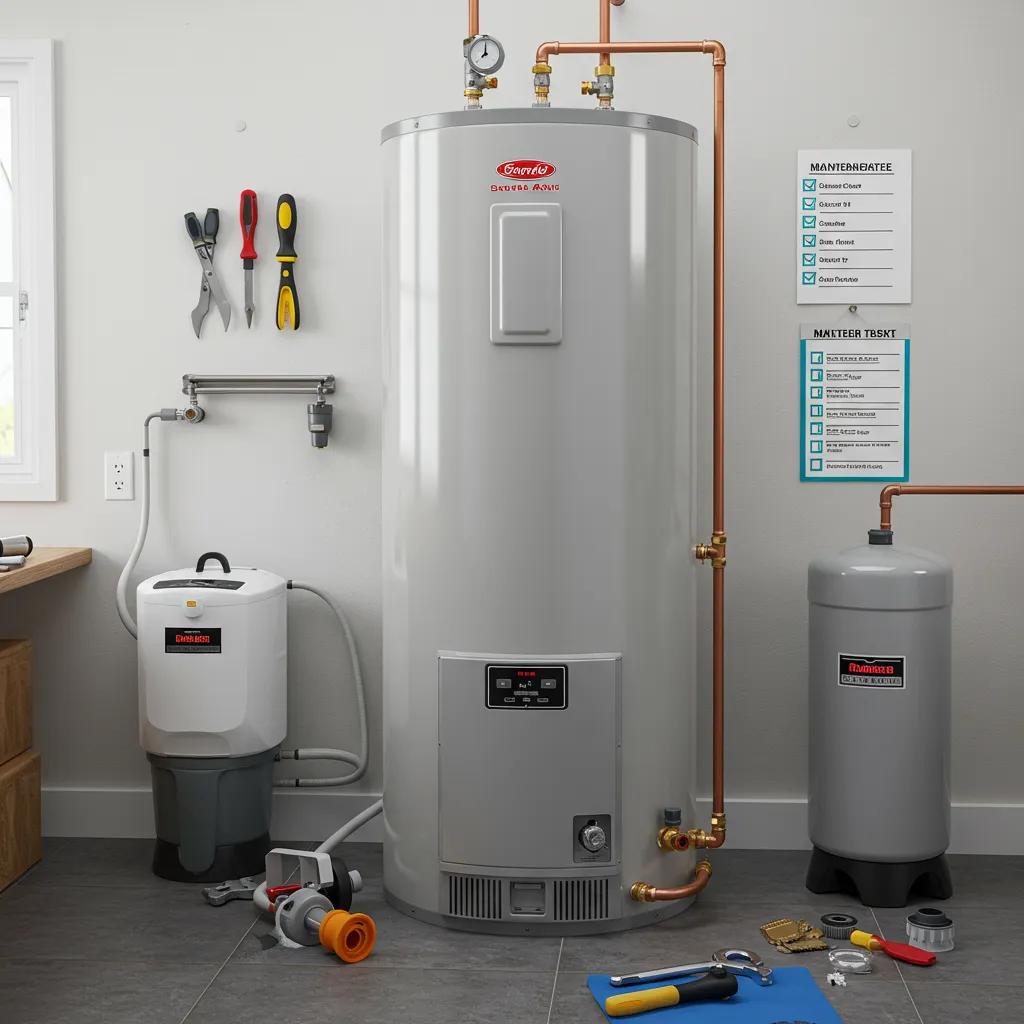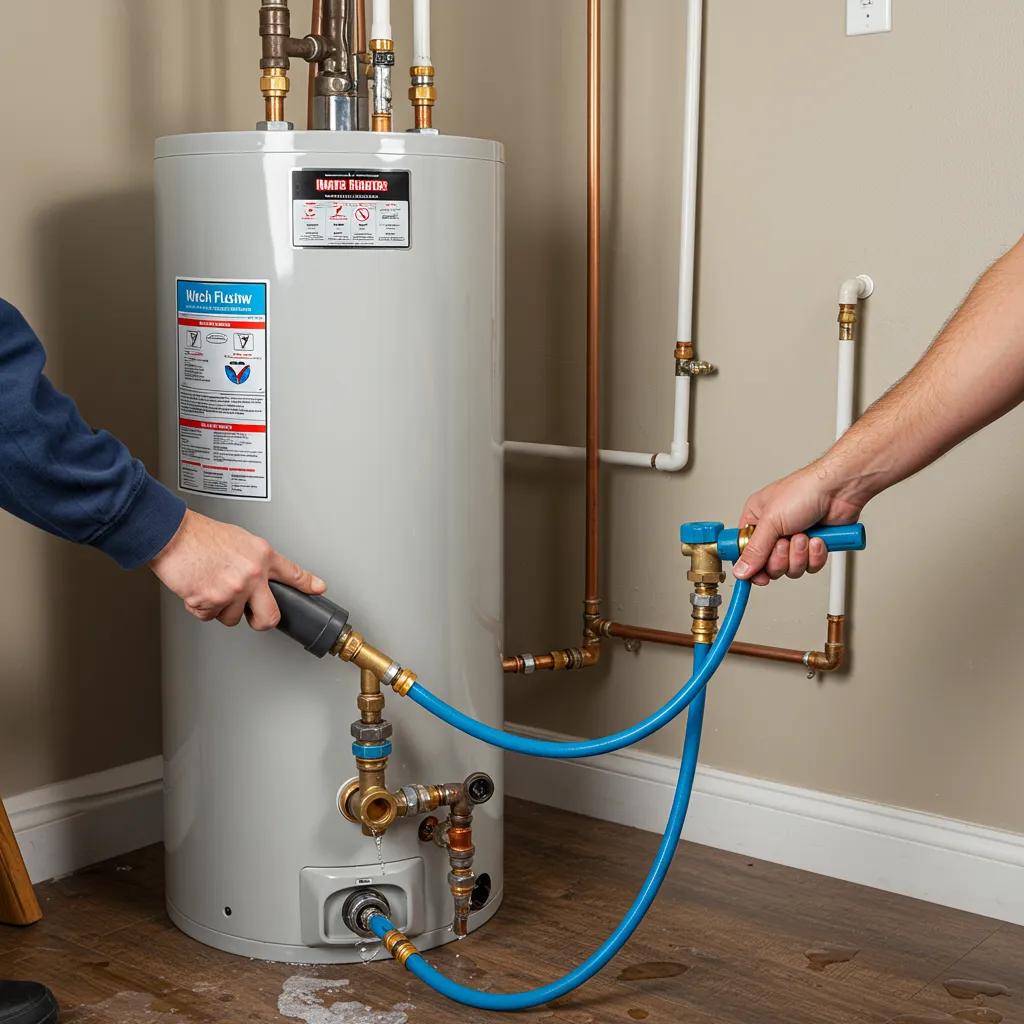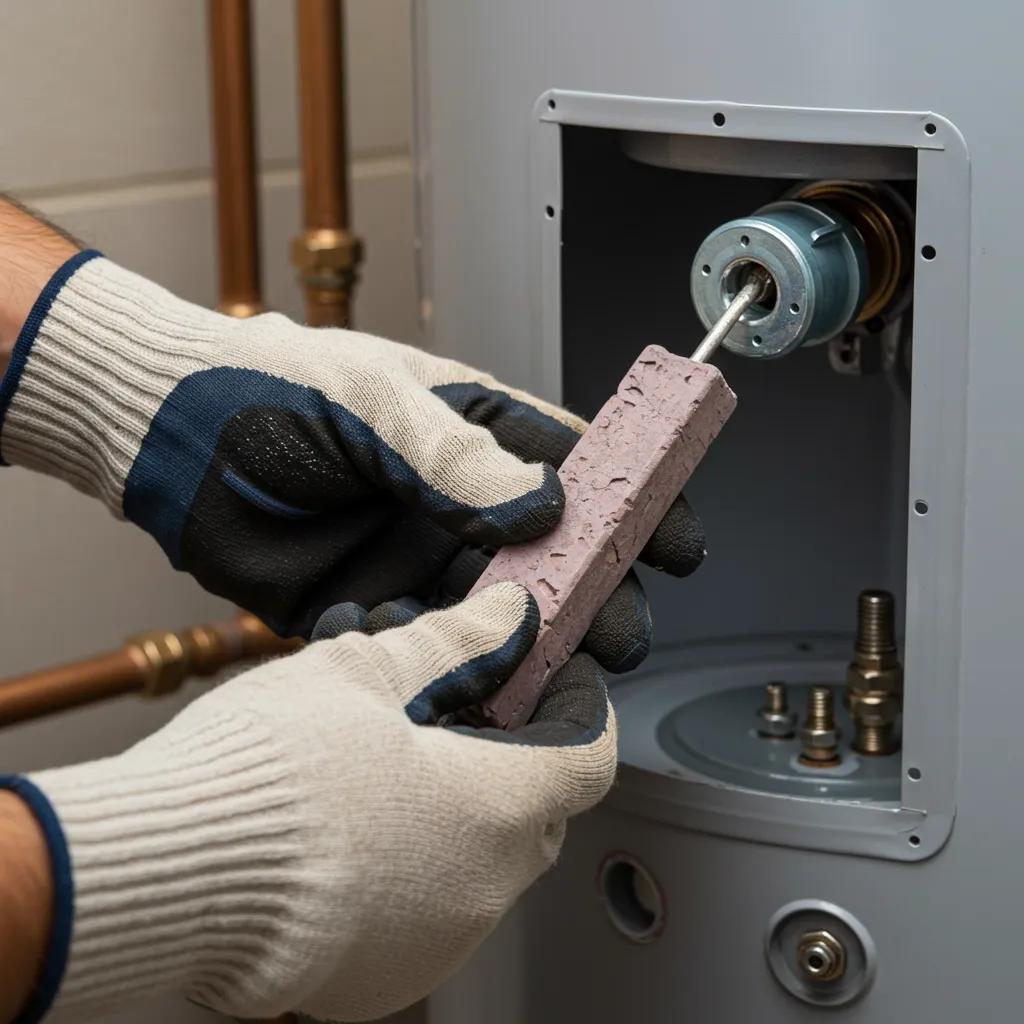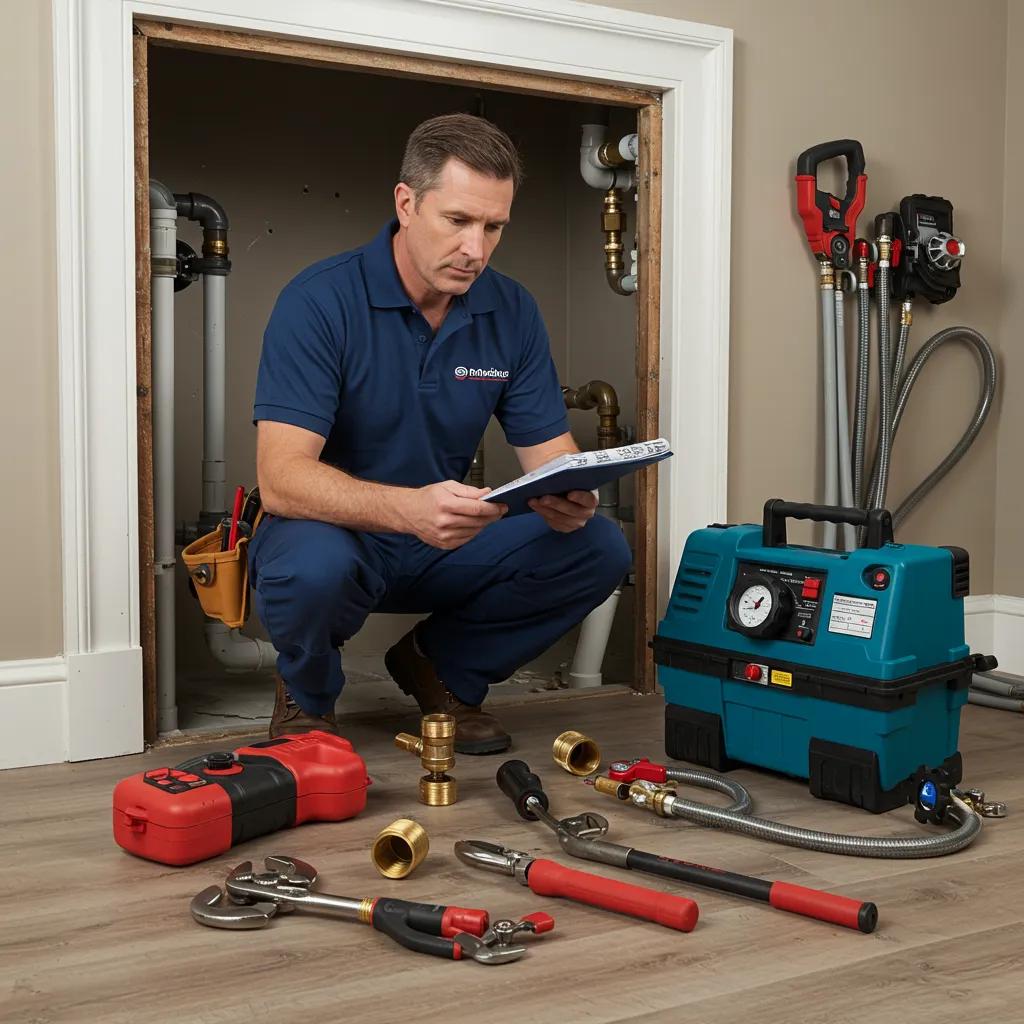How to Extend the Life of Your Water Heater: Essential Maintenance and Longevity Tips

Every year, sediment buildup, corrosion and improper settings can shorten a water heater’s lifespan by several years. By following targeted water heater maintenance tips—from flushing tanks to adjusting temperature controls—you can boost efficiency, prevent failures and delay costly replacements. This guide covers seven critical themes: flushing sediment, replacing the anode rod, testing the T&P valve, optimizing temperature settings, combating hard water, recognizing warning signs, and comparing tank versus tankless systems. Throughout, you’ll discover practical steps and professional insights drawn from C. Carlin Plumbing’s three decades of local expertise and preventative maintenance programs. Let’s explore the essential actions that safeguard your hot water supply and maximize your heater’s service life.
What Are the Most Important Water Heater Maintenance Tasks to Extend Lifespan?
Why Is Regular Flushing Critical for Removing Sediment Buildup?
Flushing your water heater tank removes sediment—mineral deposits composed of calcium and magnesium—from the bottom of the tank before they harden. Sediment accumulation reduces heat transfer efficiency, forces the burner or heating element to work harder, and accelerates corrosion at the tank base. For example, removing a half-inch of sediment can restore up to 15% in energy savings and prevent overheating damage. Regular flushing also maintains consistent water flow and helps avoid premature tank failure.
How Often Should You Flush Your Water Heater in Erie, PA?
Most manufacturers recommend flushing a standard tank-style heater once per year, but Erie’s moderately hard water conditions often call for semi-annual maintenance. Twice-yearly flushing in hard water regions prevents excessive scale buildup, reduces pump strain and lowers energy bills by up to 10%. Tracking your last maintenance date ensures you stay on schedule. Adjusting flushing frequency based on local water quality can extend your heater’s life from the typical 8–12 years to beyond 15 years.
What Are the Steps for a Safe DIY Water Heater Flush?

Below is a concise step-by-step guide to flushing a tank-style water heater safely at home.
- Turn off the power supply at the circuit breaker or set the gas control to “pilot.”
- Close the cold water inlet valve and attach a garden hose to the drain valve.
- Open a nearby hot water faucet and then open the drain valve to expel water and sediment.
- Flush until the water runs clear, then close the drain valve and refill the tank.
- Restore power or gas supply after checking for leaks and ensuring the tank is full.
Completing these five steps annually can remove harmful deposits and optimize heat exchange. If any step feels uncertain or if sediment persists, professional service is recommended to guarantee thorough removal and safe operation.
When Should You Call a Professional for Water Heater Flushing?
Calling a licensed technician becomes essential when you encounter persistent sediment, unusual noises or signs of corrosion around the drain valve. A professional flushing service offers thorough inspection of heating elements or burners, safe sediment removal even in hard water conditions, and verification of tank integrity. C. Carlin Plumbing’s Water Heater Installation & Repair service combines expert flushing with a broader maintenance check, providing honest, upfront pricing and quality workmanship guaranteed. Engaging local specialists ensures fast response times and long-term protection for your investment.
How Does Anode Rod Replacement Protect Your Water Heater from Corrosion?

What Is an Anode Rod and How Does It Prevent Tank Corrosion?
An anode rod is a sacrificial metal rod—typically made of magnesium, aluminum or zinc—inserted into the water heater tank to attract corrosive elements through galvanic action. As water chemistry attacks the rod instead of the tank walls, corrosion damage to the steel shell is prevented. For instance, replacing a corroded rod can avert pinhole leaks that would otherwise necessitate full tank replacement. Maintaining an effective anode rod is essential for tank longevity and corrosion control.
Anode Rods: Effective Corrosion Protection for Water Heaters
Sacrificial anode rods are very effective protection against corrosion. Impacts of water quality on residential water heating equipment, 2013
How Often Should You Inspect and Replace the Anode Rod?
Inspection of the anode rod every 2–3 years is recommended; replacement is necessary when the rod is corroded down to half its original diameter or encrusted with mineral scale. In areas with very hard water, an early replacement schedule—every 18–24 months—may be prudent. Tracking rod condition helps avoid unseen tank deterioration. Proper rod maintenance can extend tank lifespan by 30–50% compared to units left unprotected.
What Are the Benefits of Professional Anode Rod Replacement Services?
A professional replacement ensures correct rod selection—matching material composition to your local water quality—and proper installation depth for maximum protection. Technicians from C. Carlin Plumbing leverage 150 years of combined experience to inspect rod condition, remove scale deposits and install a high-quality rod under warranty. Their licensed team provides honest, upfront pricing and confirms tank integrity, delivering peace of mind that DIY attempts may not guarantee.
Why Is Testing and Maintaining the Temperature and Pressure (T&P) Valve Essential for Safety and Longevity?
What Is the Role of the T&P Valve in Water Heater Safety?
The Temperature and Pressure Relief (T&P) valve is a critical safety device that automatically opens to relieve excess pressure or temperature inside the heater tank. By venting steam or hot water when readings exceed safe thresholds—typically above 150 psi or 210 °F—it prevents potential tank rupture or explosions. Proper T&P valve performance protects both your home and your heater investment, ensuring safe operation throughout the unit’s lifespan.
How Do You Test the T&P Valve Properly?
To test the T&P valve, lift the lever slowly until you hear water or steam discharge, then release it to allow resealing. This operation confirms that the valve seat moves freely and that no blockages exist. Testing every six months keeps the valve functional and prevents sediment from jamming the mechanism. Documenting test dates creates a maintenance record that supports safe, long-lasting heater performance.
When Should the T&P Valve Be Replaced?
Replace the T&P valve immediately if it fails to fully reseal after testing, exhibits continuous leakage, or shows signs of external corrosion. A worn or stuck valve undermines tank safety and may allow scalding releases. Industry best practice calls for valve replacement every five years or sooner under heavy use. Professional replacement ensures correct valve sizing and compliance with local plumbing codes.
How Do Water Heater Temperature Settings Affect Efficiency and Lifespan?
What Is the Optimal Water Heater Temperature for Energy Savings and Safety?
An optimal thermostat setting of 120 °F balances energy savings, scald prevention and tank longevity. At this temperature, households can reduce standby heat loss by up to 15% while minimizing the risk of scald injuries. Holding the water heater at 120 °F also limits bacterial growth without compromising comfort for daily tasks like dishwashing and bathing.

Reducing the thermostat to 120 °F thus improves efficiency and protects both users and equipment.
How Does Temperature Adjustment Reduce Energy Costs and Scalding Risks?
Lowering the tank temperature by 10 °F can slash energy bills by 3–5 percent, translating into annual savings of up to $100 for an average household. Cooler settings also decrease thermal stress on tank components and heating elements, slowing corrosion and extending operational life. At 120 °F, scald injuries are virtually eliminated for young children and seniors, enhancing home safety.
Should You Insulate Your Water Heater and Pipes to Improve Efficiency?
Applying an insulation blanket to your tank and wrapping accessible hot water pipes with foam insulation reduces heat loss and temperature fluctuations. This added barrier can boost overall system efficiency by up to 9 percent and maintains stable water temperatures between uses. Insulation also eases the workload on heating elements, translating into a longer service life and lower utility costs.
How Does Hard Water Impact Your Water Heater and What Are the Best Solutions?
What Problems Does Hard Water Cause for Water Heaters?
Hard water contains high levels of dissolved minerals—primarily calcium and magnesium—that precipitate out as sediment inside the heater tank and on heating elements. Over time, this scale buildup reduces heat transfer, forces longer burn cycles, and accelerates corrosion of internal components. Persistent hard water conditions can shorten a heater’s lifespan by several years if unaddressed.
How Can Water Softeners Extend Your Water Heater’s Life?
A water softener system exchanges hardness ions for sodium or potassium, preventing scale formation within the tank and on heating elements. By keeping sediment levels low, softeners preserve energy efficiency, reduce maintenance frequency and protect corrosion-prone components. Installing a softener upstream of your heater can extend its operational life by up to 50 percent in hard water regions.
What Local Water Quality Factors Should Erie, PA Homeowners Consider?
Erie County’s water supply often tests at moderately hard to hard levels, meaning mineral concentrations exceed 120 mg/L. Seasonal fluctuations in source water hardness can exacerbate scale deposition, especially during summer months when water usage peaks. Homeowners should review local water quality reports and adjust flushing frequency or softener settings accordingly to match regional conditions.
What Are the Signs Your Water Heater Needs Professional Maintenance or Repair?
How Can You Detect Leaks, Noises, and Rust in Your Water Heater?
Visible water pooling, rumbling or popping sounds during heating cycles, and rust-colored water all signal emerging tank issues. Small drips at pipe connections often indicate a failing dip tube or loose fittings, while loud noises point to thick sediment layers causing hot spots. Spotting these warnings early lets you schedule preventative service before catastrophic failure.
Why Is Annual Professional Inspection Important for Water Heater Longevity?
An annual inspection by a licensed plumber evaluates key components—T&P valve, anode rod, heating elements and burner assembly—to catch wear before it leads to breakdowns. Professional diagnostics may reveal hidden leaks, corrosion or electrical faults that DIY checks often miss. C. Carlin Plumbing’s yearly maintenance packages combine detailed inspection with tune-ups, ensuring reliable performance and warranty compliance.
When Should You Contact C. Carlin Plumbing for Emergency Water Heater Service?
If your heater stops producing hot water entirely, exhibits continuous leaks or generates unsafe pressure/temperature readings, secure emergency service immediately. C. Carlin Plumbing offers 24/7 rapid response for water heater repair, leveraging local expertise and quality parts to restore functionality. Prompt professional intervention minimizes property damage and system downtime.
How Do Tankless and Traditional Water Heater Maintenance Compare for Lifespan Extension?
What Are the Key Maintenance Differences Between Tank and Tankless Water Heaters?
Traditional tank heaters require annual flushing, T&P valve testing and anode rod inspection—tasks driven by sediment management. In contrast, tankless systems need periodic descaling every 6–12 months and filter cleaning to prevent mineral clogging in heat exchangers. Both systems benefit from temperature checks and occasional professional tune-ups, but tankless units demand more frequent attention to scale buildup.
Water Heater Construction: Inner Shell, Pipes, and Anode Rod
With the help of schematic diagram it helps to see construction of the inner structure of the water heater, like the inner shell size, outlet pipe, inlet pipe and anode rod. Corrosion prevention and industrial economic analysis aspects for water heater, RS Barot, 2020

Which Water Heater Type Offers Longer Lifespan with Proper Care?
With diligent upkeep, tankless heaters often surpass 20 years of reliable operation, while tank-style heaters typically last 8–12 years. The absence of a storage tank eliminates large-scale sediment accumulation in tankless systems, reducing corrosion risk. However, higher upfront maintenance costs for descaling must be balanced against the extended service life and energy savings.
How Can Professional Maintenance Optimize Both Tank and Tankless Systems?
Licensed technicians provide system-specific expertise—from anode rod replacement in tanks to thermal exchanger descaling in tankless models—ensuring thorough care and preventing missed issues. C. Carlin Plumbing’s HVAC Maintenance Programs include both heater types, combining preventive inspections, scale treatment and safety valve testing under one service plan. This integrated approach simplifies scheduling and reinforces your heater’s longevity with quality workmanship and honest pricing.
Extending the life of your water heater means combining regular maintenance tasks, proper temperature control and timely professional support. By flushing sediment, replacing the anode rod, testing safety valves, optimizing settings, and addressing hard water, you can delay replacement costs and maintain reliable hot water. Whether you choose a tank or tankless system, partnering with experienced technicians for annual inspections and emergency repairs ensures fast local response and guaranteed workmanship. Implement these water heater maintenance tips today to protect your home, lower operating costs and enjoy decades of efficient performance.



